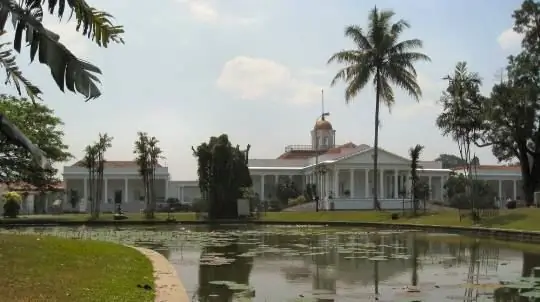
Description of the attraction
Bogor Palace is one of the 6 official residences of the President of Indonesia. The palace is located in the city of Bogor, West Java province on the island of Java. The palace is known for its architectural sophistication and botanical gardens that surround the palace. The botanical gardens cover an area of 284 sq.m.
The Bogor Palace was opened to the general public in 1968, visits were only allowed for groups that received permission from the then President of Indonesia, Haji Mohammed Suharto, and individual visits were prohibited. During colonial times (the period of Dutch colonization), the palace was a favorite place for the governors general of the Netherlands East Indies due to the climate of the city of Bogor. Later, during the reign of President Sukarno, the palace was his official residence. For some time, the palace was not used, and in 2015, the new President of Indonesia, Joko Widodo, moved to Bogor Palace from the Merdeka Palace, where his residence was located.
Earlier on the site of the palace there was a mansion, which in 1745 was ordered to be built by Gustav von Imgof, the governor of Batavia at that time, but the building was completed by another governor, Jacob Mossel. At the beginning of the 19th century, reconstruction was carried out, one floor was added and a wing was added to the eastern and western parts of the house. Later, a small dome was added on the roof of the main building, and gardens were laid around the building. Unfortunately, in 1834 there was an earthquake provoked by the eruption of the volcano Salak, which practically destroyed the mansion. In 1856, the destroyed mansion was demolished, and in its place a palace was built, but already one-story. From 1870 to 1942, the palace served as the official residence for the Dutch governor-general. Later, after Indonesia gained independence, the palace became the residence for the presidents of Indonesia.
There are several buildings on the territory of the modern estate, the largest of which is Gedung Induk. This palace houses the president's office, reception, cinema, library, dining room, living room and main reception hall. The palace is also famous for its art collection, which consists of 448 paintings, 216 sculptures and 196 ceramics. Most of this collection was put together by President Sukarno.






